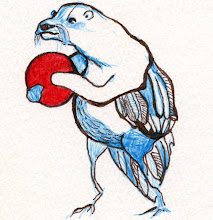Aside from the fact that both painting and photography are typically 2-D, I experience them as being pretty different. For me (I don't want to generalize), painting feels more expressive, while photography feels more journalistic. When I begin making art, I usually start with an idea or issue that I wish to probe, and choose my medium based on how I want to conduct my inquiry. When I paint, I combine memory, imagination, and observation to investigate an idea. In most cases, I am very intentional with my imagery, sketching out forms and compositions before articulating them in paint. Photography is more about finding and framing existing scenes that help me share my ideas and then picking the best image or images out of a selection of many, sometimes hundreds, of options.
Despite these differences, these two mediums have played equally important roles in my creative life, and each practice has taught me something important about how to approach the other. As a slow act of representation, painting has helped me learn how to look, to concentrate, and to see. It has inspired an acute level of visual mindfulness. When I picked up photography as my second art form in college, I found that this finely honed sense of observation helped me to identify photo-worthy moments and environments. In return, photography taught me how to give up some of my rigid control over outcomes, and to embrace serendipitous mistakes as sources of new thinking - a lesson I try to apply to my current painting practice.
I took the photos posted in this entry with my Holga camera. A Holga is a cheap brand of camera developed many years ago on the premise that all people should have access to making photographs. It feels like a toy camera - light and plastic, with just a few basic settings to choose from (near, medium, far). It leaks light and produces completely unpredictable images, and in doing so, it teaches me tremendous things about letting go. The trick with the Holga is figuring out when to use it. It gives images an ethereal, ghostly effect, creating a sense of nostalgia. This suits some subject matters well and others not at all. I took the images posted below in an abandoned cement factory outside of Allentown during the dead of winter. The decaying buildings, slowly being reclaimed by nature, are eerie and beautiful and powerful all at once. Perfect for a Holga.






